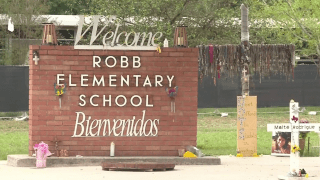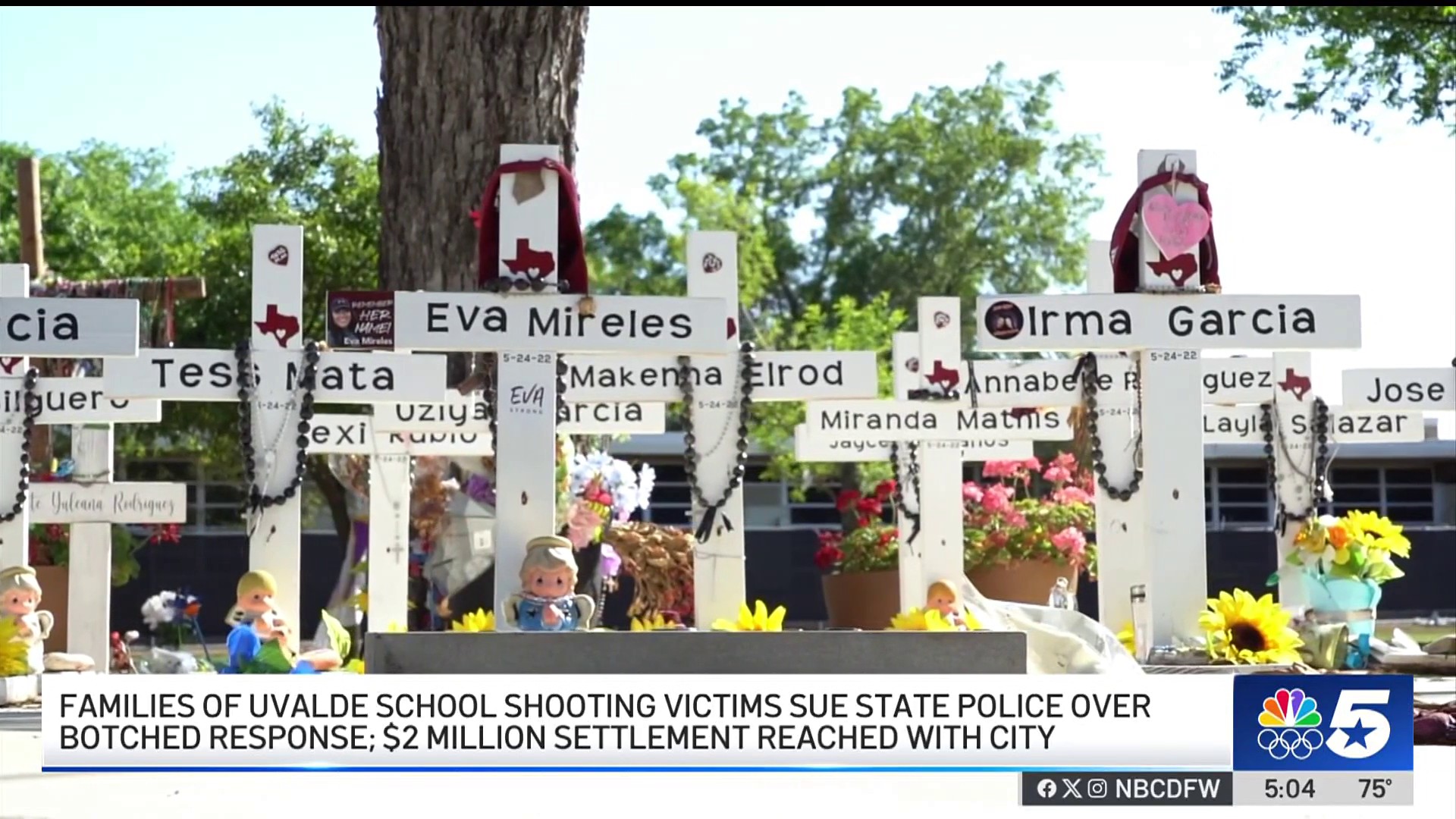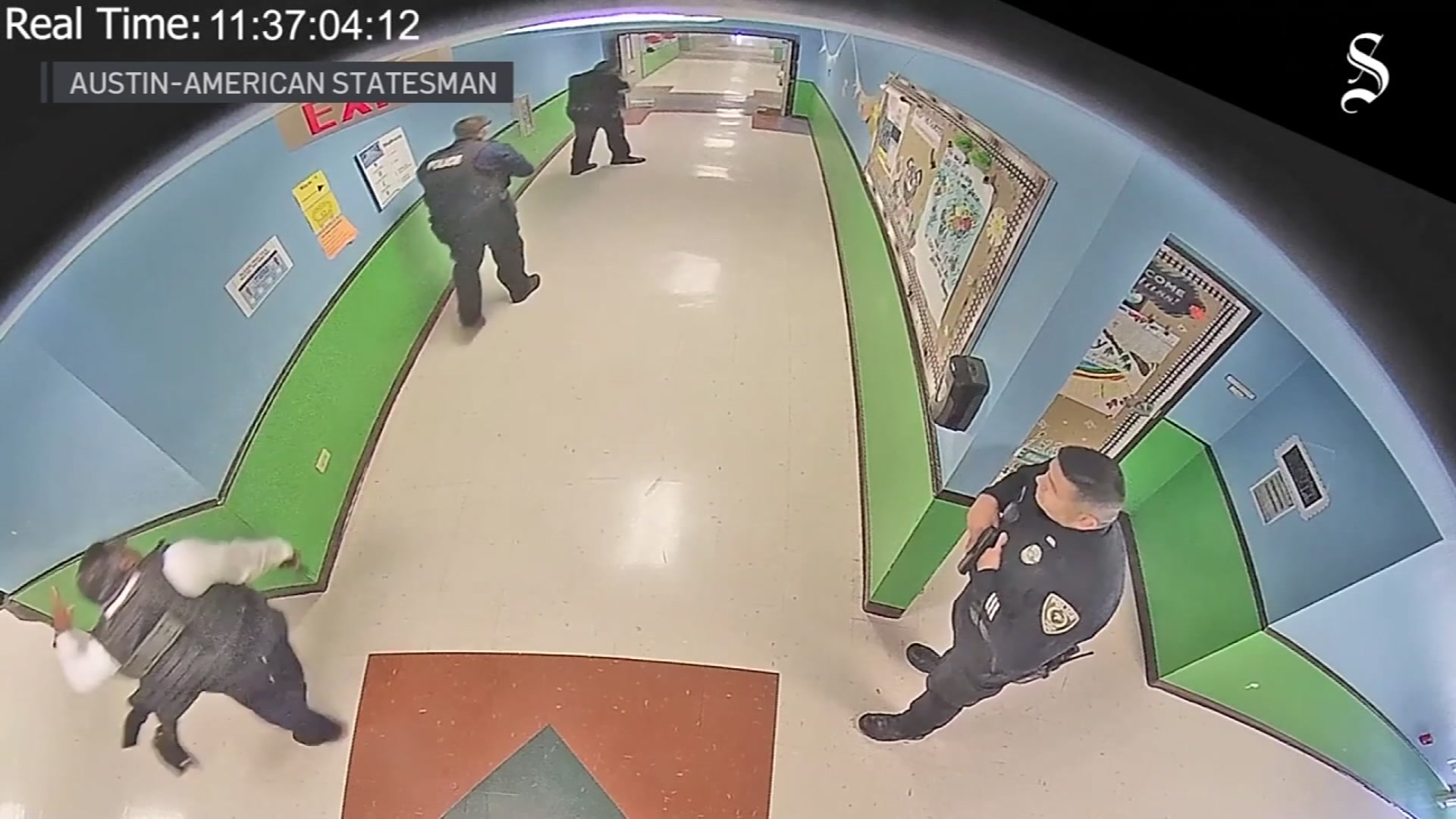
The uncle of the Uvalde, Texas, school shooter who killed 19 students and two teachers begged police to let him try to talk his nephew down, according to a 911 call included in a massive trove of recordings and transcripts released by city officials Saturday.
The records connected to the May 2022 shooting at Robb Elementary School were released by Uvalde officials after a prolonged legal fight. The Associated Press and other news organizations brought a lawsuit after the officials initially refused to publicly release the information.
“Maybe he could listen to me because he does listen to me, everything I tell him he does listen to me,” said the man, who identified himself as Armando Ramos. “Maybe he could stand down or do something to turn himself in,” Ramos said, his voice cracking.
The caller told the dispatcher that the shooter, identified as 18-year-old Salvador Ramos, was with him at his house the night before. He said his nephew stayed with him in his bedroom all night, and told him that he was upset because his grandmother was "bugging" him.
Get top local stories in DFW delivered to you every morning. Sign up for NBC DFW's News Headlines newsletter.
"Oh my god, please, please, don't do nothing stupid," the man says on the call. "I think he's shooting kids."
The call came in about 1 p.m. on May 24, 2022, about 10 minutes after the shooting had stopped. Salvador Ramos was fatally shot by authorities at 12:50 p.m. He had entered the school at 11:33 a.m., officials said.
The delayed law enforcement response - nearly 400 officers waited more than 70 minutes before confronting the gunman in a classroom filled with dead and wounded children and teachers - has been widely condemned as a massive failure. The Uvalde massacre was one of the worst school shootings in U.S. history.
Multiple federal and state investigations into the slow response laid bare cascading problems in training, communication, leadership and technology, and questioned whether officers prioritized their own lives over those of children and teachers in the South Texas city of about 15,000 people 80 miles (130 kilometers) west of San Antonio. Families of the victims have long sought accountability for the slow police response.
Just before arriving at the school, Salvador Ramos shot and wounded his grandmother at her home. He then took a pickup from the home and drove to the school.
A frantic woman called 911 at 11:29 a.m., just before the shooting began, to tell a dispatcher that a pickup had crashed into a ditch and that the occupant had run onto the school campus.
"Oh my God, they have a gun," she said, telling the dispatcher that shots were fired.
"Oh my God, I think there was kids at PE area," she said. "Please hurry!"
At 1:19 p.m., another relative of Salvador Ramos called 911, scared that he might head her way next.
"Can you please bring somebody to my house?" Kesley Ramos asked the dispatcher. "The active shooter, he's my cousin and I don't want him to come to my house."
Multiple federal and state investigations into the slow law enforcement response laid bare cascading problems in training, communication, leadership and technology, and questioned whether officers prioritized their own lives over those of children and teachers in the South Texas city of about 15,000 people 80 miles west of San Antonio. Families of the victims have long sought accountability for the slow police response.
Two of the responding officers now face criminal charges: Former Uvalde school Police Chief Pete Arredondo and former school officer Adrian Gonzales have pleaded not guilty to multiple charges of child abandonment and endangerment. A Texas state trooper in Uvalde who had been suspended was reinstated to his job earlier this month.
Some of the families have called for more officers to be charged and filed federal and state lawsuits against law enforcement, social media, online gaming companies, and the gun manufacturer that made the rifle the gunman used.
The police response included nearly 150 U.S. Border Patrol agents and 91 state police officials, as well as school and city police. While dozens of officers stood in the hallway trying to figure out what to do, students inside the classroom called 911 on cellphones, begging for help, and desperate parents who had gathered outside the building pleaded with officers to go in. A tactical team eventually entered the classroom and killed the shooter.
Previously released video from school cameras showed police officers, some armed with rifles and bulletproof shields, waiting in the hallway.
A report commissioned by the city, however, defended the actions of local police, saying officers showed “immeasurable strength” and “level-headed thinking” as they faced fire from the shooter and refrained from firing into a darkened classroom.



